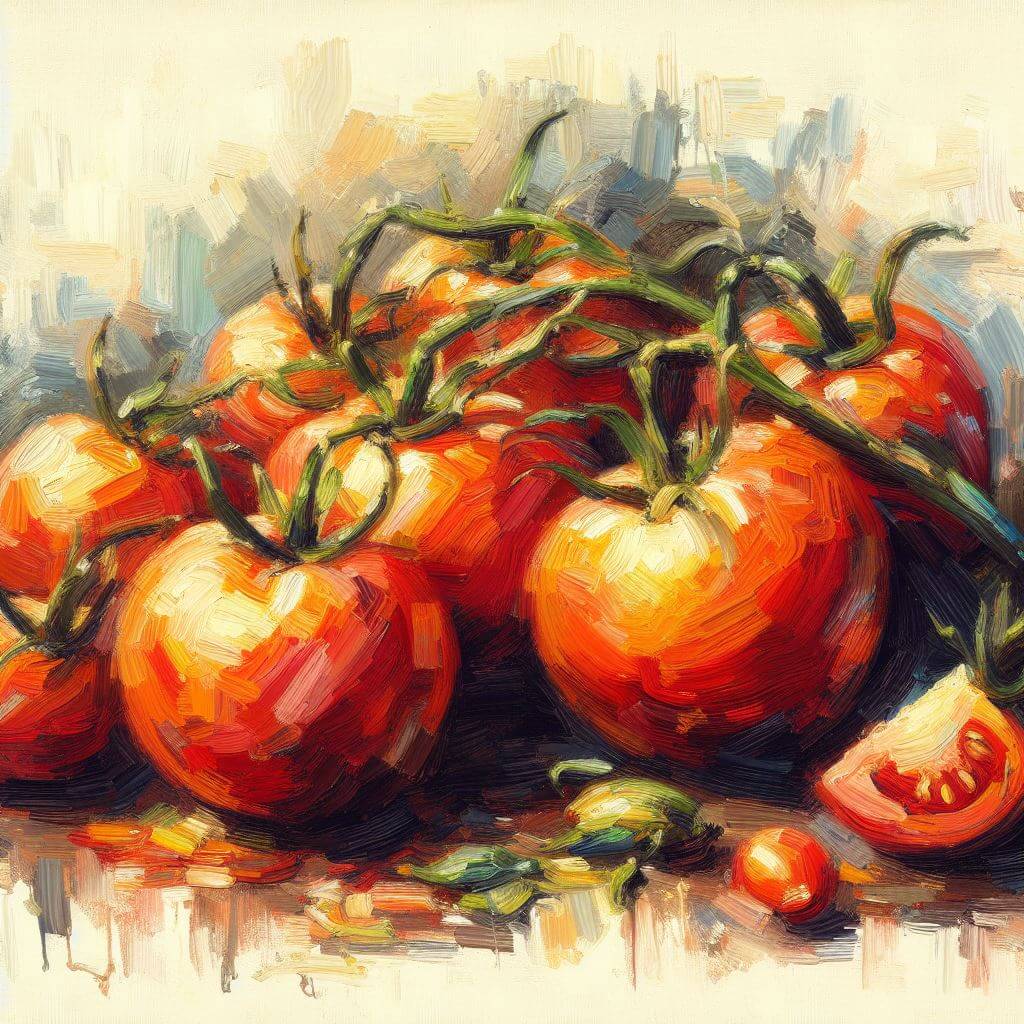
Tomato gardening is a fulfilling hobby that combines the excitement of growing your own food with the tranquility of spending time in nature. Growing tomatoes in Connecticut, with its unique climate and fertile soil, offers an exceptional opportunity to cultivate this delightful fruit. This guide will provide you with all the necessary information to commence your tomato gardening journey in the Nutmeg State.
Information about Tomatoes
Tomatoes, scientific name Solanum lycopersicum, are a favorite among gardeners worldwide. Their versatility in cooking, coupled with their rich, tangy flavor, makes them a staple in most kitchens. Moreover, tomatoes are packed with essential nutrients like Vitamin A, Vitamin C, potassium, and lycopene, promoting health and wellness.
Characteristics of Connecticut
Connecticut, with its warm summers and well-draining soil, provides an optimal environment for growing tomatoes. The state experiences a humid continental climate, characterized by hot summers and cold winters. This climate, combined with the state’s fertile loamy soil, creates the perfect conditions for tomato plants to thrive.
The state’s average temperature during the growing season ranges from 70°F to 85°F, ideal for tomato growth. This warmth, coupled with the well-draining soil, prevents the roots from becoming waterlogged, promoting healthier and more productive plants.

Best Time to Plant Tomatoes in Connecticut
The timing of planting tomatoes is crucial for a successful harvest. As a rule of thumb, tomato plants should be sowed indoors 6 to 8 weeks before the last spring frost date. In Connecticut, this typically falls between April 1st and April 10th.
Once the seedlings have grown and outdoor temperatures consistently stay above 50°F, usually around mid-May, it’s time to transplant the tomatoes outdoors. Planting tomatoes during this period allows them to maximize the growing season, resulting in a bountiful harvest.
Remember, the growth of tomato plants can vary depending on when they’re planted. Early planting allows for a longer growing season, while late planting may lead to a smaller yield but can often result in sweeter fruit due to the hotter growing conditions.
When to Plant Tomatoes in Connecticut: Region-Specific Recommendations
Northwestern Connecticut
This region includes areas like Torrington and experiences a cooler climate. The growing season here is slightly shorter, so it’s best to start your tomato seeds indoors around late March and transplant them outdoors in mid to late May, once the soil has warmed sufficiently.
Northeastern Connecticut
Areas in this region, like Putnam, generally have similar temperatures to the northwest. Therefore, the recommended planting time for tomatoes is also mid to late May, following the last frost and when soil temperatures have risen adequately.
Southwestern Connecticut
This region includes areas like Stamford and Norwalk. It experiences a slightly warmer climate compared to the northern parts of the state. Here, you can typically start planting tomatoes a bit earlier, around early to mid-May, after the danger of the last frost has passed.
Southeastern Connecticut
This region, including areas like New London and Groton, also enjoys a slightly warmer climate. Therefore, like the southwestern region, tomatoes can be planted from early to mid-May, once the risk of frost is negligible.
Central Connecticut
Encompassing areas like Hartford and New Britain, this region experiences a climate that sits between the cooler northern and warmer southern regions. Therefore, the safe window to start planting tomatoes is usually around mid-May, post the last frost and when soil temperatures are conducive.
Remember, these are general guidelines, and actual planting times can vary based on specific local weather conditions. Always monitor your local weather forecasts and soil temperatures for the most accurate planting times.

How to Plant Tomatoes: A Step-by-Step Guide
Planting tomatoes requires preparation and care, but the reward of fresh, homegrown tomatoes is well worth the effort. Here’s a simple step-by-step guide to help you get started:
Prepare the Soil: Amend the soil with compost or organic matter to improve its fertility and drainage. This will ensure your tomatoes have the nutrients they need to grow healthy and strong.
Plant the Seedlings: Dig a hole deep enough to cover two-thirds of the seedling, as tomatoes can develop roots along their stems. This will result in a stronger, more stable plant.
Water Thoroughly: After planting, water the seedlings thoroughly. Tomatoes prefer deep, infrequent watering as opposed to frequent, light watering.
Provide Support: As your tomatoes grow, they’ll need support. Install cages or stakes early on to prevent damage to the plant and make harvesting easier.
Tomato Varieties Suitable for Connecticut
Choosing the right variety of tomatoes for your garden is an essential step toward a successful harvest. Given the state’s climate and growing conditions, certain types of tomatoes are more likely to thrive. Here are some of the best tomato varieties for Connecticut:
Early Girl: True to its name, the Early Girl variety matures quickly, producing fruit in just 50 to 60 days. This variety is a great choice for those eager to start their tomato harvest early in the season.
Big Beef: If you dream of large, juicy tomatoes, the Big Beef variety is a perfect choice. These tomatoes are known for their size and flavor, and they’re resistant to many common tomato diseases, making them a great option for novice gardeners.
Cherokee Purple: This heirloom variety is prized for its unique color and rich, smoky flavor. Cherokee Purple tomatoes are well-suited to Connecticut’s climate and are a fantastic option for those seeking something a little different.
Roma: Roma tomatoes are a classic variety known for their thick, meaty flesh and low moisture content, making them ideal for sauces and pastes. They are also disease-resistant, making them a reliable choice for your garden.
Sweet Million: If cherry tomatoes are more your style, consider planting Sweet Million. This variety produces clusters of small, sweet tomatoes, and is known for its high yield.
Remember, the best tomato variety for you depends on your personal preferences, cooking needs, and the specific conditions of your garden. Experiment with different varieties to discover which ones you prefer and which ones deliver the best results in your garden.

Caring for Your Tomato Plants
Tomatoes, while relatively easy to grow, do require some care and attention. Here’s how to keep your tomato plants healthy and productive:
Mulching: Apply a layer of mulch around your tomato plants. Mulch helps to retain moisture, suppress weeds, and regulate soil temperature. Organic mulches, such as straw or compost, can also enrich the soil as they decompose.
Fertilizing: Tomatoes are heavy feeders, so they benefit from regular feeding. Use a balanced, slow-release fertilizer at planting time, then switch to a high-potassium fertilizer once the plants start to flower.
Pruning: Prune your tomato plants to improve air circulation and direct energy to fruit production. Remove the lower leaves to prevent disease, and pinch off any suckers (the small shoots that appear between the main stem and branches) to focus the plant’s energy on the main fruit-bearing branches.
Pest and Disease Control: Regularly check your plants for signs of pests or diseases. Early detection is key to maintaining healthy plants. If you notice any issues, use organic or chemical treatments as necessary.
Reaping the Rewards of Your Tomato Garden
Growing tomatoes can be a rewarding experience, from the initial planting to the joy of harvesting. By understanding the characteristics of tomatoes and the unique conditions of Connecticut, you can ensure a successful growing season.
Timing your planting to coincide with the state’s climate, knowing how to plant and care for your tomatoes, and understanding how to combat potential issues, you’ll be well on your way to a bountiful harvest. With patience, care, and a bit of hard work, you’ll soon be enjoying the fruits of your labor – juicy, homegrown tomatoes that are packed with flavor and nutrients.
Remember, gardening is as much about the journey as it is about the destination. So, take the time to enjoy every step of your tomato-growing adventure. Happy gardening!



